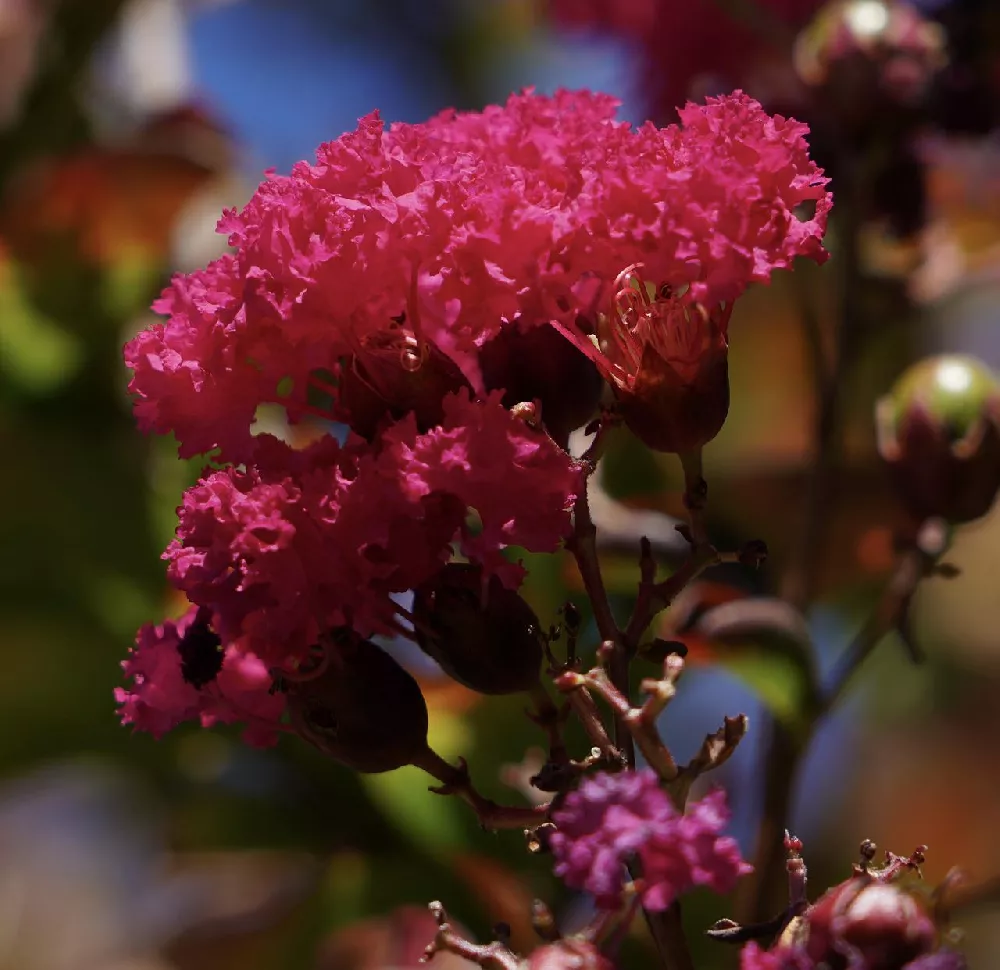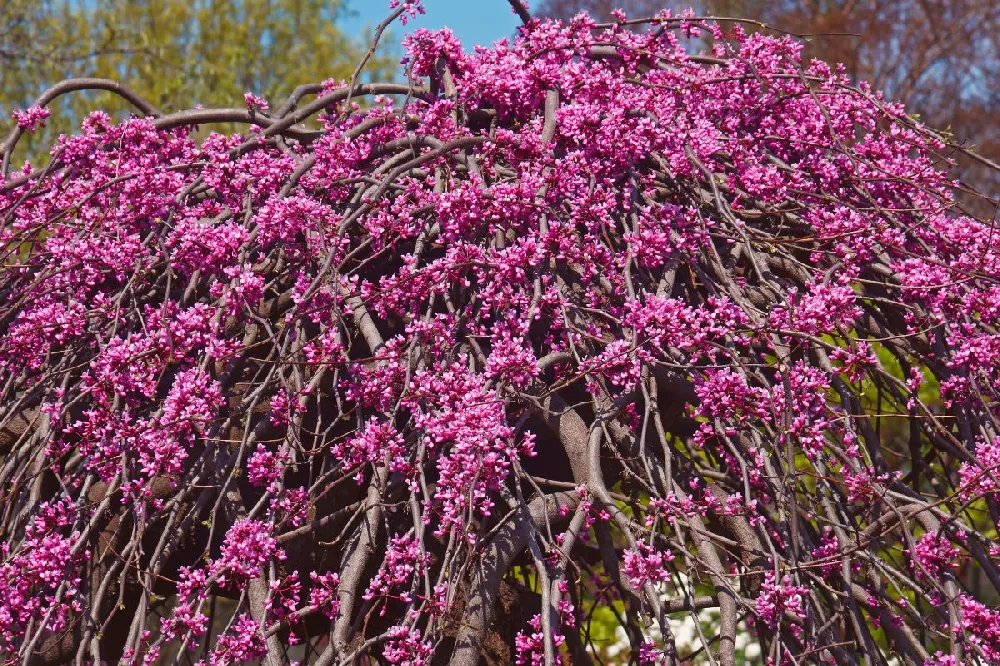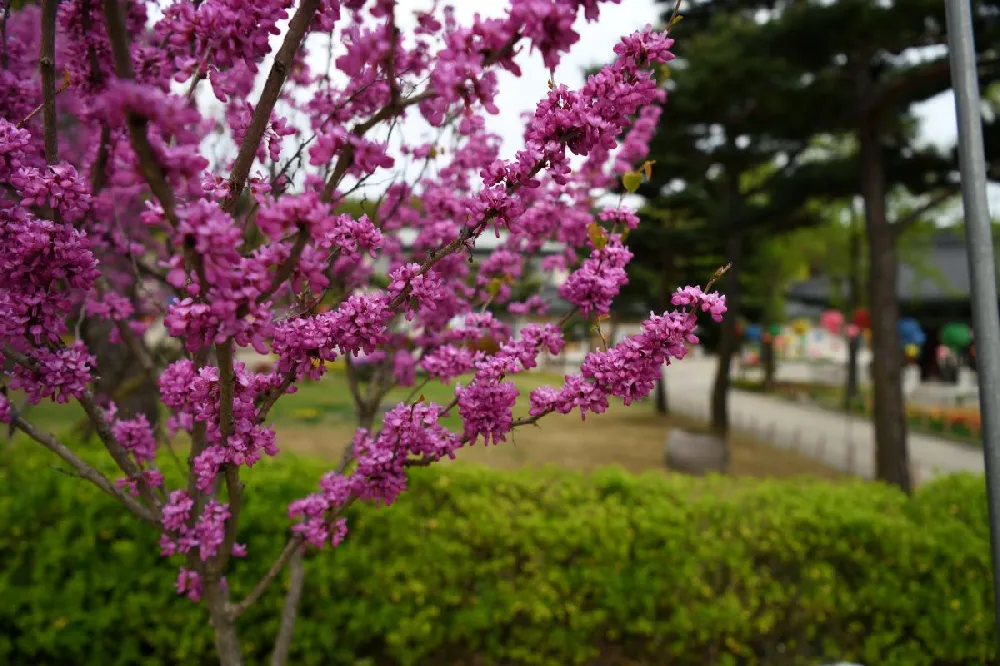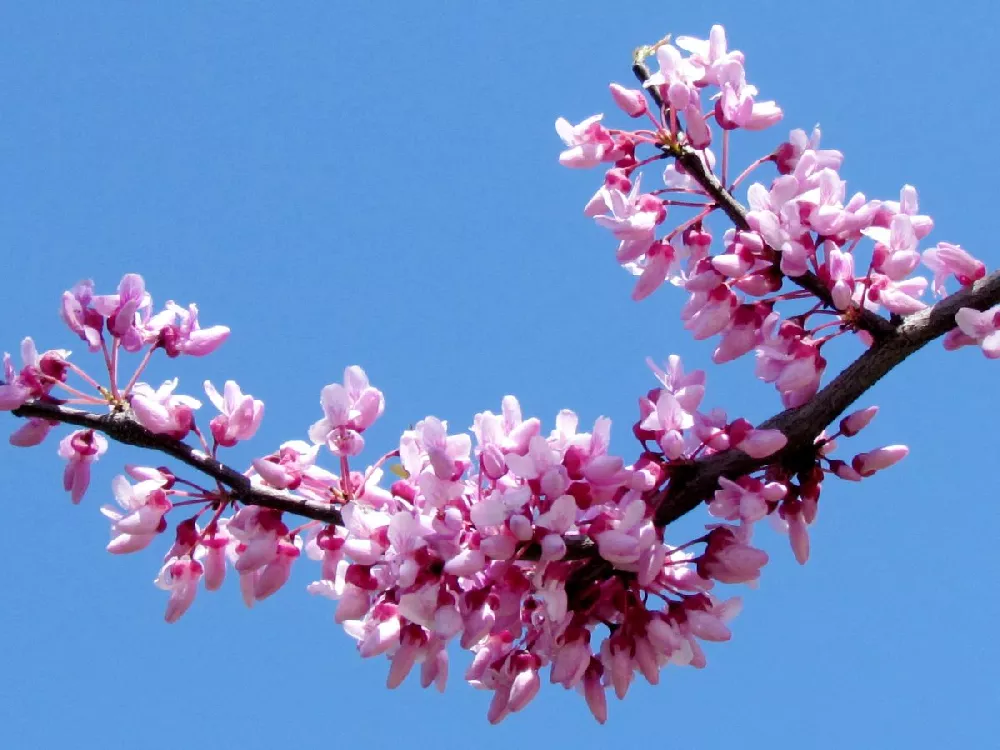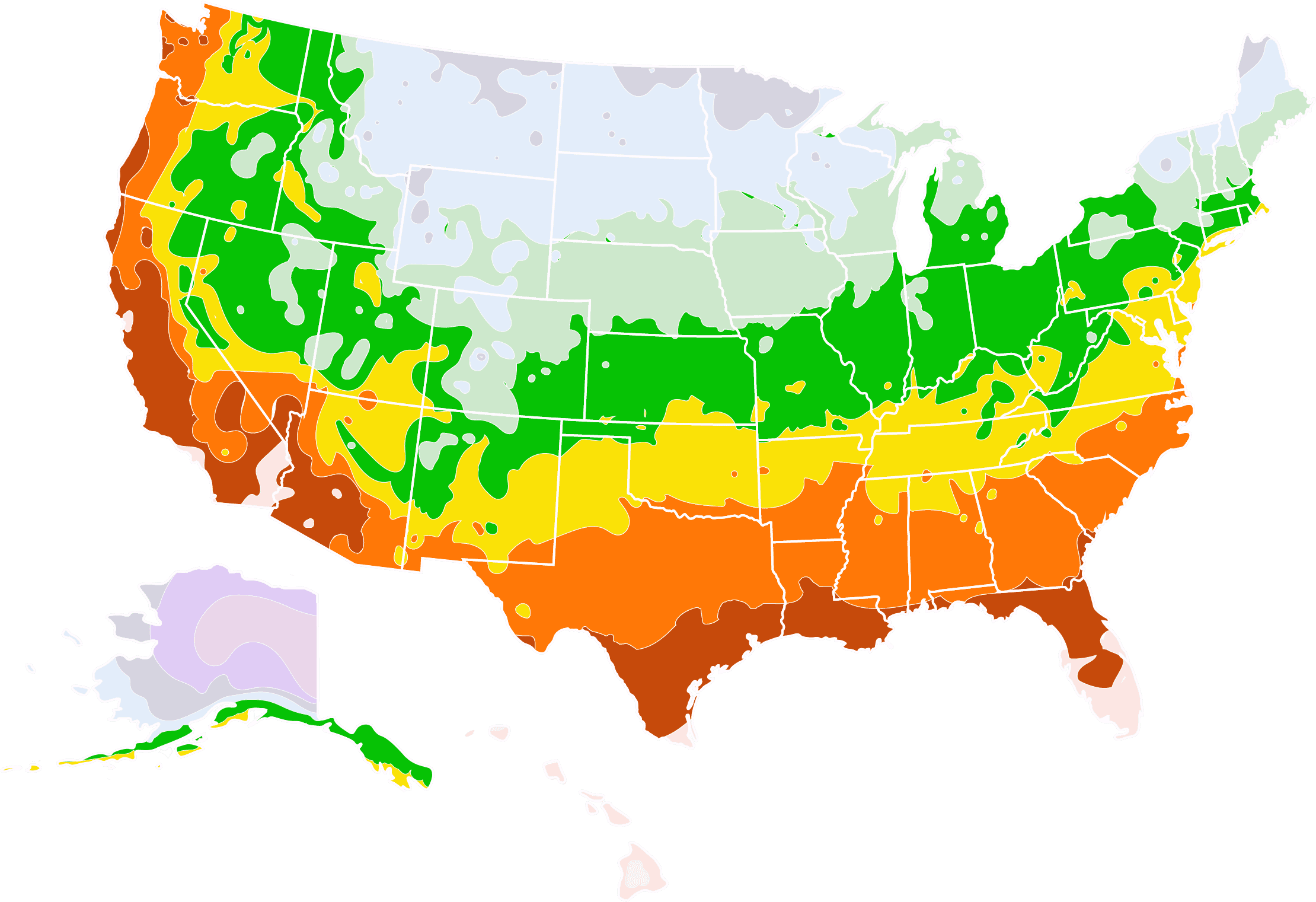Dynamite Crape Myrtle for Sale - Buying & Growing Guide
There are very few trees that can match the impressive appearance of a Dynamite® cape myrtle. If you are a seasoned gardener, you're likely aware of how beautiful crape myrtle varieties can be. However, not many crape myrtles can match the deep red blooms that this variety holds. Dynamite crape myrtles, known botanically as Lagerstroemia indica 'Whit II,' also feature an interesting multi-stemmed growth habit that culminates in a spreading canopy and is somewhat cold-hardy while resisting many pests and diseases.
- The Dynamite crape myrtle has deep red blooms that last most of the season.
- It has a multi-stemmed habit with a spreading canopy.
- It is relatively hardy with good pest and disease resistance.
Enter your zip code to find nearby stores that may carry this plant.
Plant Care
Sunlight

The Dynamite® crape myrtle requires at least six hours of direct sunlight per day.
Watering
Avoid overwatering. Water when you notice the first 1 or 2 inches of soil has become dry.
Fertilizing

Use a general-purpose fertilizer a few times during the spring.
Planting and Care
Planting instructions
The soil for a Dynamite crape myrtle tree should be somewhat moist but also allow for proper drainage. It should also have a relatively low pH, between 5 and 6.5. To allow this tree to exhibit its best flowering characteristics, your growing location should also be one that provides full sunlight. Once you find a suitable location, start the planting process by digging a hole that is as deep as the plant’s root ball and about twice as wide.
Watering and nutrients
Newly planted Dynamite crape myrtle trees will need enough water to keep the soil consistently moist and help the tree’s roots adapt to their new growing location. After establishment, you can reduce your watering schedule, providing water whenever the top inch of soil has become dry. However, you should avoid overwatering at all times. Feed your Dynamite crape myrtle tree with a balanced fertilizer. Feedings should occur during the spring season. Often a single feeding is enough for this tree, but some gardeners choose to fertilize multiple times in spring.
Pollination
The flowers of a Dynamite crape myrtle tree are not only capable of adding an intense burst of color to your garden, but they are also beneficial to your local ecosystem. When these plants are in bloom, a period that can last for many months, they can attract many ecologically important pollinator insects, including honeybees. However, pollination is not all that important to gardeners who grow this plant, as the Dynamite crape myrtle is not a tree that produces edible harvests.
Pruning
Prune your Dynamite crape myrtle tree during the later part of winter, before the tree has exited its dormant phase. As is the case when pruning most trees, you should focus on removing any branch that is broken, dead, diseased, or crossing another branch. Additionally, many gardeners use pruning to emphasize the impressive form of this tree. Those gardeners typically achieve this goal by removing branches that are lower on the tree to create a more vase-like form.
Pests, diseases, and animals
Dynamite crape myrtle trees, and most other crape myrtle varieties, are quite resistant to common garden pests and diseases. This resistance makes for a beautiful plant that will present you with minimal concerns throughout its life. However, the occasional pest or disease problem is possible. When insect-related complications arise, the most common causes are aphids and Japanese beetles. Also, diseases, including powdery mildew, mold, and leaf spots, can also occur. Beyond those problems, the most common issues for this tree will be the result of improper maintenance.
Achieving maximum results
You should exercise caution when fertilizing a Dynamite crape myrtle tree, as over-fertilizing can be detrimental to the ornamental qualities. When a Dynamite crape myrtle receives too much fertilizer, it will usually respond by producing more leaves and diminishing the number of flowers that bloom. Another factor that can influence the flowers is a lack of sunlight. When a Dynamite crape myrtle gets too little light, it may bloom less, and the color of those blooms may fade from red to white.
FAQs
How long do Dynamite crape myrtle blooms last?
How large does a Dynamite crape myrtle grow?
Most Dynamite crape myrtle trees will develop into small trees or large shrubs. Typically, the mature height of these trees can be anywhere between 15 to 25 feet. The spread of this tree is often a similar dimension or a bit smaller. It also does not take long for a Dynamite crape myrtle to reach a mature height. These plants grow fast and can add as much as 2 feet of new growth in one year.
Does the Dynamite crape myrtle have the best red crape myrtle blooms?
Although there is some competition, many gardeners proclaim that the Dynamite crape myrtle is the best red-flowering variety of any crape myrtle tree. Dynamite crape myrtles hold flowers that are incredibly rich and deeply colored. However, there are other red-flowering crape myrtles of note, including a variety called the Red Rocket® crape myrtle, which has similar blooming characteristics as that of the Dynamite crape myrtle.
Compare Similar Products
Customer Reviews
 Crape Myrtle purchase and delivery
Crape Myrtle purchase and deliveryTree came packed and protected within a few days of purchase. Will need to wait for spring / summer and see if it blooms.
 DCM reply
DCM replySo far it seems to be healthy; planted everything as soon as received and used your fertilizer packet as well as mulched; I don't like the DCM as well as the black diamond I don't think ......but I only see pics of it as of now; my live oak is dead I think from last purchase but every other item looks good and well at the moment
 Healthy so far
Healthy so farUnsure about online purchase of trees. Pleasantly surprised. Followed planting guidelines and so far we're watching them begin their growth.
 Nice packing and delivery
Nice packing and deliveryExcellent. Website content is very informative and Easy to understand to select proper tree
 Dynamite crepe myrtle
Dynamite crepe myrtleGreat looking tree! Great customer service & fast shipmeny!
You can't add more Product Name - Product size to the cart.
OK